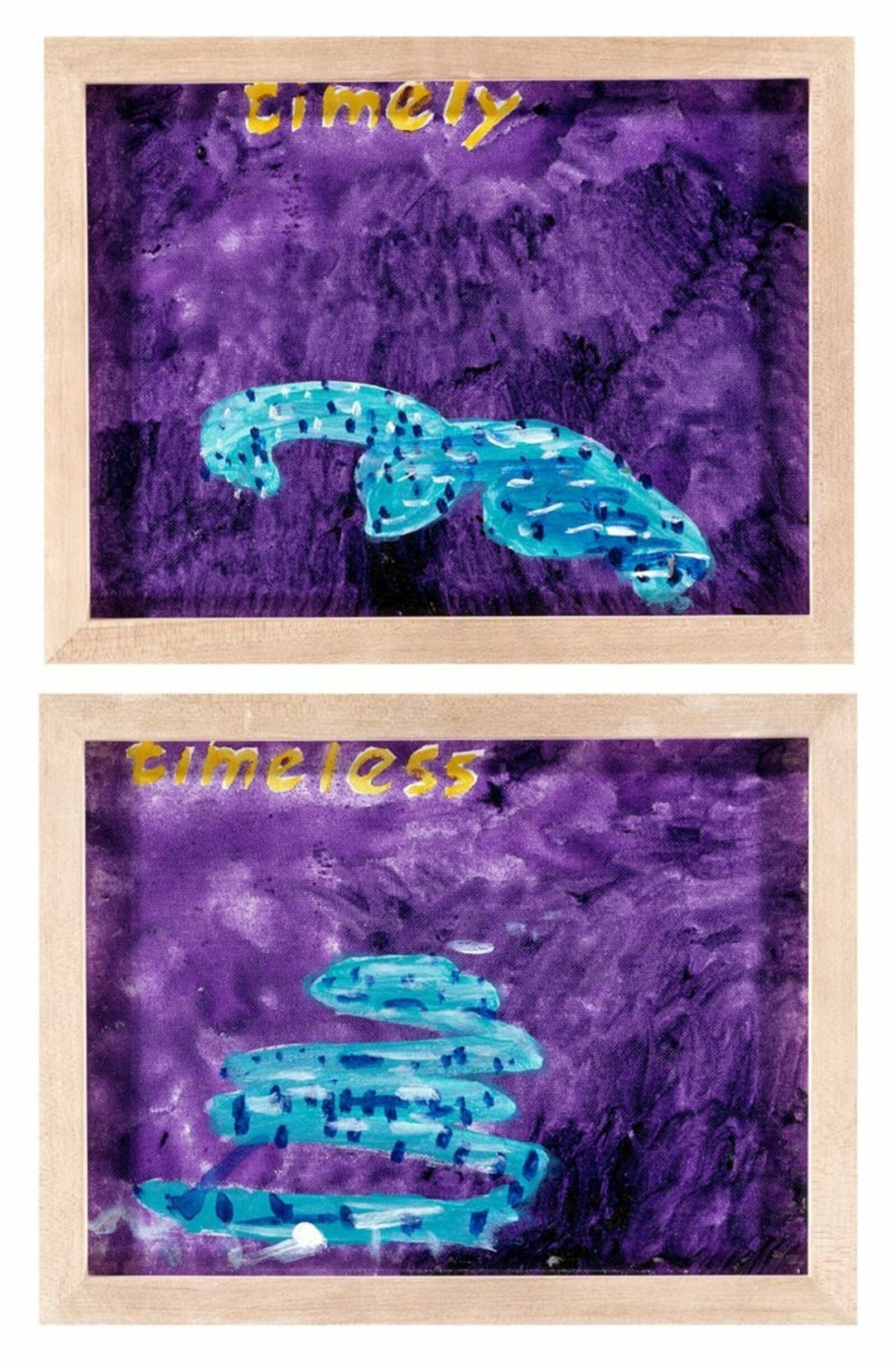











featured gallery for October 2012
Notes on a Steady Decline
"Shade came from reading," or so Dorian Corey tells us in Jennie Livingston's 1991 documentary tour de force Paris is Burning. The film documents the late 1980s and early 1990s gay Ball scene in New York City, and primarily in Harlem. It's a fascinating work which at once paints compelling portraits of its main characters while astutely mapping the phenomenon of Ball culture. Livingston presents drag performer Dorian Corey as the voice of wisdom and experience, her memory serving as a gateway into the history of the culture. She and the other subjects of the film offer their insights into what it means to "walk a Ball" and in so doing mime the rarefied strata of wealth, femininity and/or masculinity into which they are not born. In her discussion of gay slang used by communities that participate in the Ball scene, Corey explores the nuanced difference between "reading" and "shade," between the craft of direct insult and the art of implied critique through exposing truths.
Through the Balls, participants celebrate and lampoon largely white middle-class and upper-class western culture and its power structures, and the extreme artifice of the Ball emphasizes the critique. It is similar to the strategy Bertolt Brecht articulated in his 1930 essay "The Modern Theatre is the Epic Theatre,"1 and one that is second nature to the "legendary children" of the Ball scene. It is a strategy in which Felix Gonzalez-Torres was also well-versed.2 The "intellectual distance," Brecht posited, is fundamental to the work of Gonzalez-Torres, and his work was built upon the uneasy tension between form and content, with the content typically signaled within a parenthetical title.Gonzalez-Torres also likened his practice to drag, saying in an interview with artist and educator Tim Rollins that making work in different forms or "fronts" is "almost like being in drag ... I'm in a different drag persona as needed."3
When I was approached to select images from the Visual AIDS Frank Moore Archive Project, I immediately knew I wanted to begin with Felix's work, for its relevance continues to grow. As I write these notes on my selections from the archive, Americans are experiencing two major national political conventions bookending the Labor Day holiday weekend, as the United States is poised to elect its next leader. It all brings Felix and his work to mind -- especially his early large-scale endless paper stack works "Untitled (Veteran's Day Sale)," 1989 and "Untitled (Memorial Day Weekend)," 1989 -- as well as the many nightly telephone conversations we shared, talking energetically about art and politics, which were two favorite subjects.
In 1988, Gonzalez-Torres began a series of paint and graphite works on paper or on canvas which resemble small Agnes Martin paintings or Sol LeWitt wall drawings, but are actually abstractions based on laboratory blood work tracking the sum total of a patient's T-cells. The series is parenthetically titled "Bloodwork," but sometimes also bore the further parenthetical title "Steady Decline." The images pictured a measured but not exactly mechanical grid with a diagonal line descending from an upper corner to the opposite lower corner, signifying the patient's descent into lowered immunity then to illness and possibly death. Gonzalez-Torres revisited the idea a number of times, varying the number of canvases and related days of blood work in the parenthetical title. His strategy, as with his other work, was to give just enough information to evoke meaning but leave ample room for the viewer to insert their own meaning(s) and narrative(s).
That strategy of image-making which, through its unpacking, offers critique while remaining open-ended is a thread that runs through many of the works from the archive presented here, from Hunter Reynolds' evocative curtain of stitched and woven photographs Felix, 1996, in memoriam to Gonzalez-Torres; to Vincent Cianni's photograph The Wedding Car, 2001, which has only gained significance as the struggle for gay marriage rights looms ever larger in the public's consciousness; to Brian Buczak's stirring but ambivalent painting Flags, 1986. All have a beauty and poetry that counter-balances their subject matter, often mortality. The same delicate equilibrium is palpable in Paul Thek's painted diptych Timely and Timeless, 1988, and in Sunil Gupta's poignant self-portrait shot in a mirror, From Here to Eternity, 1999.
Chuck Ramirez, a gay HIV+ artist who was based in San Antonio, Texas, is a recent artist addition to the Frank Moore Archive project. After struggling with and conquering various health issues over the last two decades, Ramirez died suddenly in a tragic bicycle accident in 2010. In hisGodiva 4 & 5, 2002, the artist presents a photograph of an empty chocolate candy tray. We are left to imagine the consumption of the candies when faced with the stark beauty of the synthetically gilded plastic trays, empty. They bring to mind both the pleasure of consuming and the disappointment in its aftermath. It is the vacuity of the trays which makes them uncanny. Similarly, in Ramirez'sWhatacup, 2002, the artist elegantly posits the body as a temporary container; his photograph draws attention to the small oval slogan printed on the cup in blue lettering:
WHEN I AM
EMPTY
PLEASE DISPOSE
OF ME
PROPERLY
"Shade came from reading," indeed. Through approaches both intuitive and intellectual the artists presented in Steady Decline offer resistance and critique. Whether absorbed culturally through rituals such as the Ball scene over which Dorian Corey once presided or discovered in theories such as the Epic Theater of Bertolt Brecht, the concept of "intellectual distance" unites these challenging and defiant works.
A steady decline can refer to T-cells, general health, or even economic performance. Conversely, it can also now signify a steady decline of deaths from AIDS and hopefully HIV infections. Whatever our perspective, we cannot forget that the AIDS crisis is not over, and that far too many of the artists in this selection left this world too soon. Others continue to strive. And each artist has created work that is at once sublime and unsentimental.
Steven Evans
October 2012
- Included in Brecht on Theatre: The Development of an Aesthetic, ed. and trans. John Willet, pp. 33-42 and reprinted in Felix Gonzalez-Torres, ed. Julie Ault (New York and Gottingen, steidldangin, 2006), pp. 60-67.
- Gonzalez-Torres discussed Brecht's influence on his work in conversations and interviews with various authors; see essays by Robert Storr and by Amada Cruz and interviews by Robert Nickas and by Tim Rollins collected in Felix Gonzalez-Torres, ed. Julie Ault.
- Tim Rollins, "Felix Gonzalez-Torres: Interview," in Felix Gonzalez-Torres (New York, A.R.T. Press, 1993), p. 14. [Excerpted in Felix Gonzalez-Torres, ed. Julie Ault.]
